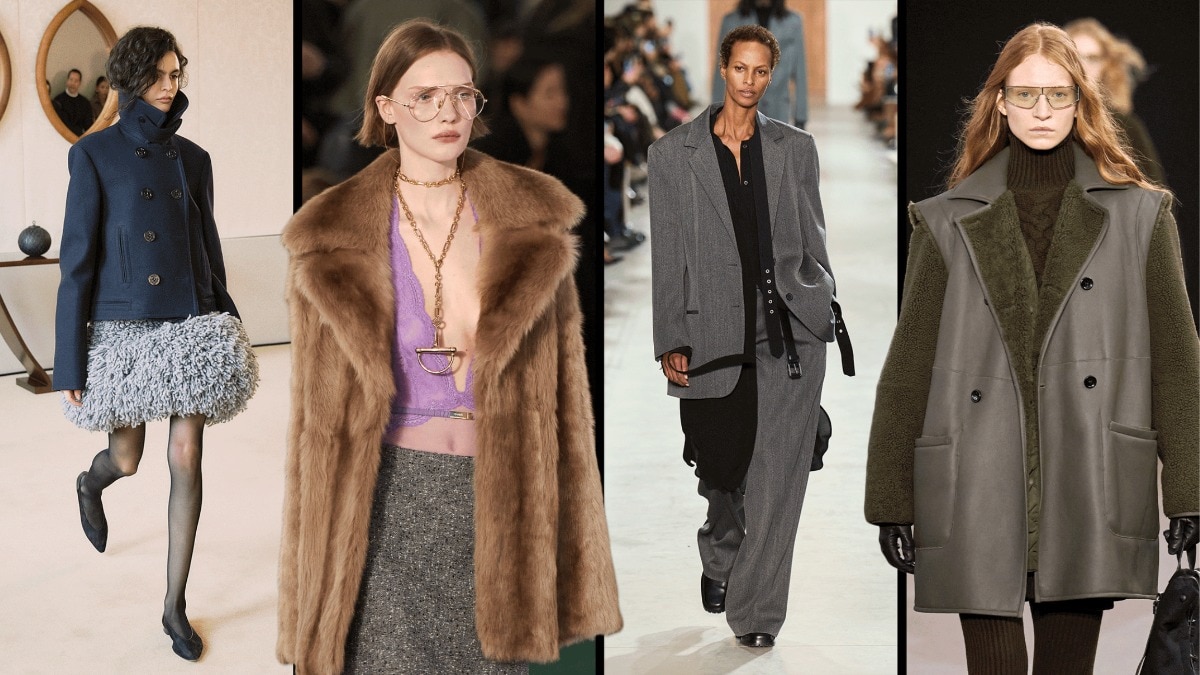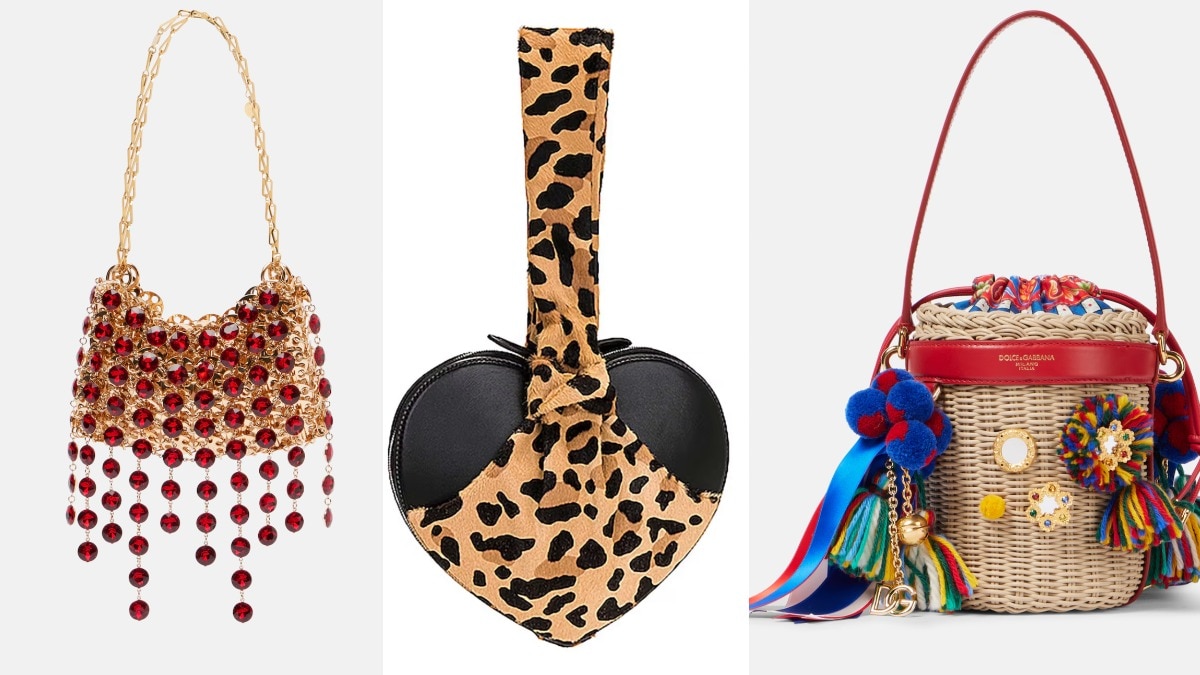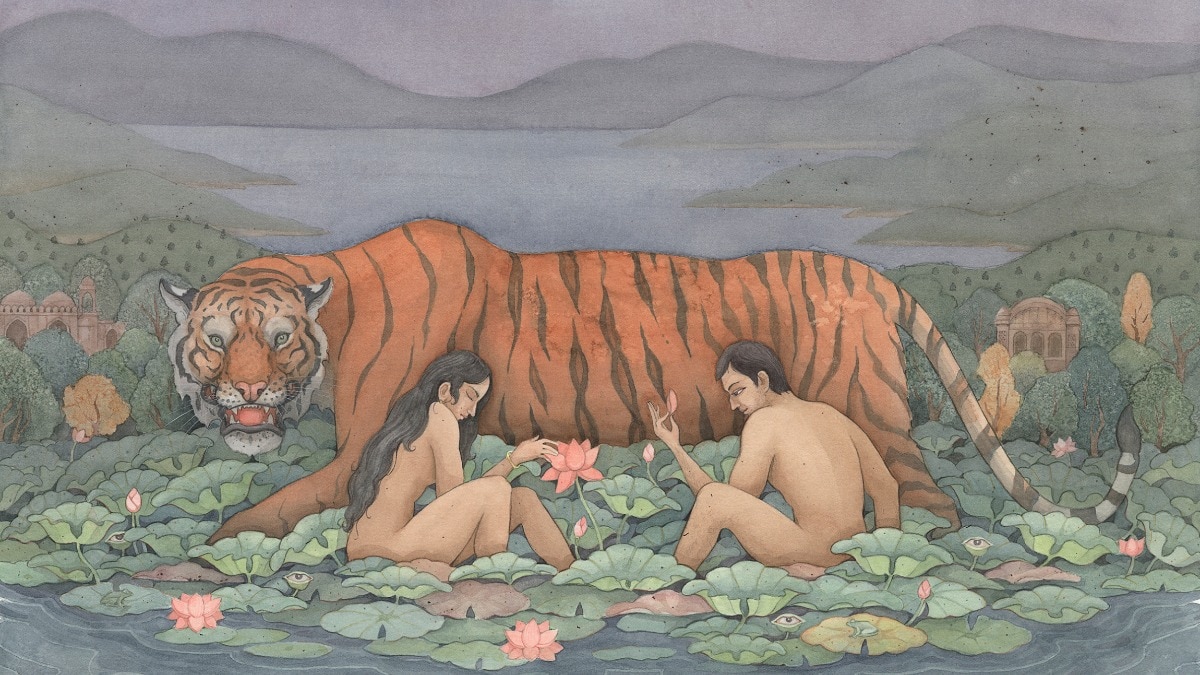The tale of the blouse—from the Victorian style to the corset-bralette, all in here
Bazaar India traces its roots, its flirtations with royalty, and the glamorous avatars of today.


My most cherished memories of my late maternal grandmother, Thakurani Ratan Kumari, is of her sitting in a cane chair in her large patio, surrounded by her beloved pomeranians, wearing a light chiffon sari with a long blouse that covered her entire midriff. In their heyday, women of my grandmother’s era, the 1950s—especially those from royal and aristocratic backgrounds—were known to wear blouses that went all the way down and below their petticoat, with two slits on either side from where the sari would easily drape over the shoulder, without crumpling the blouse. In fact, if you look at photos of Maharani Gayatri Devi of Jaipur, she always wore her trademark French chiffons with a long, demure blouse, much like most of the royal women of that era from the erstwhile princely States of Jodhpur, Udaipur, and Kota, among others.

Chiffon saris were the perfect accoutrements for covering one’s head, a style that royal ladies in the past—right up to the present—were inclined to do. A Banarasi silk sari could easily slip off the head, but the chiffon sari stayed in place. To match their chiffons, the blouse went with the formal, covered up look, because no royal wanted to be deemed as ‘indecent’ in the eyes of onlookers.
A Pucca English Beginning

This sense of ‘decency’ and being ‘proper’ is what’s at the crux of the matter with the blouse in its modern avatar. The sari itself comes from a long line of fabrics that were draped around the body (the earliest mention is in the Rig Veda, which is several thousand years old; as are temple sculptures proof to this garment’s ancient origins). “In most regions, the blouse was not even worn until the mid-19th century,” says Rta Kapur Chishti, textile guru and author of Saris of India: Tradition and Beyond (Roli Books). “It came into existence from people, outsiders, staring at women.”
The story, as Chishti recounts, pertains to Jnanadanandini Tagore, sister-in-law of Rabindranath Tagore and great social reformer of Kolkata, who travelled to Mumbai with her husband in 1860, and initially wore a chador over her sari, because there was no blouse or petticoat at the time (she is credited with introducing both, in their modern version). Jnanadanandini wanted to go out and socialise at the club with her husband. She saw the way the Parsis—who had adapted Western norms—wore English blouses and petticoats over their silk garas. By the time she returned to Kolkata, Jnanadanandini had adopted the Western blouse, lengthened the sari by a metre, styled the pallu over the left shoulder, and introduced pleats.

“It was more about mixing Western sensibilities to get the work done,” says Princess Akshita M Bhanj Deo of Mayurbhanj, a former princely State in Orissa with strong ties to Kolkata, who has her own sustainable fashion label. Her own great-grandmother—Maharani Sucharu Devi (the second wife of Maharaja Sriram Chandra Bhanj Deo of Mayurbhanj) and her sister Suniti Devi (the Sen sisters)—grew up with the Tagore ladies, as well as the most fashionable set in Kolkata. “My great-grandmother wore Victorian high-necked, puff-sleeve blouses with brooches. She and her sister brought in this avant garde style of dressing, which then became fashionable across cosmopolitan India—Mumbai, Chennai, and Kolkata, which spread to the West.”
Both Rta and Akshita agree that the blouse, in its present format, did not come about directly from the British—who played no role in it—but rather through interaction with them.
The Origins, the Choli

Before the blouse, the choli reigned supreme. “It’s a 19th-century phenomenon,” says Chishti. From Maharashtra (which had the handwoven fabric, khun) to Karnataka, Gujarat (with the chaniya choli worn with mirror work skirts), and Rajasthan (that has the kurti-kanchli), this upper garment was worn almost always with a lehenga, chaniya, or ghagra. Then the choli-blouse changed, Chishti adds. “The sari was adopted in urban areas, starting with the trading communities like the Parsis and Patels, who began travelling overseas.”
“The backless cholis existed in various parts of India, where you still see traditional designs,” says David Abraham of the designer duo Abraham & Thakore, who’ve introduced their own versions with their trademark handloom saris. “The local designs were probably absorbed and taken in with a trend. They gradually evolved... Let’s not forget that the blouse started as a bodice undergarment (like the kanchli part of the kurti-kanchli in Rajasthan), because the choli grew sleeves, became very fitted, and came with hooks in the front.” That said, the tribal communities never wore a choli, and many still don’t, to this day.
Today, women are wearing blouses that are a re-imagination of the choli of yore. “The classic, fitted choli came in waves,” says Abraham. “It made an appearance in the 1940s and post-Independence, became an accepted shape.” He adds that the original sari was worn a millennia ago without a stitched blouse, but just a bandeau wrapped around the upper body—if anything at all. “It was with European sensibility and tailoring that the blouse evolved into a more fitted shape—Western cutting in terms of darts and cutting the armhole into a curve,” says Abraham. “The blouse became a garment necessary due to modesty.”
Myriad new options

Designer Arpita Mehta, who hails from Gujarat, recalls the chaniya and backless choli ensemble that was traditionally worn in her family. “This choli is not very modern,” she says. “But it’s now part of a sari. Today, the sari can be worn with a knotted shirt, or a brocade, hand-embroidered style, or even a Banarasi jacket.”
Mehta recalls her own maternal grandmother’s blouse style as formal and very feminine, worn with silk saris and blouses, while her mother’s blouses being more flirty, à la actor Mumtaz, with the sleeveless rage that defined the ’60s. “The blouse, now, is a fashion statement,” she says. “The current generation, not used to wearing the sari as our mothers were, is even pairing them with embellished and embroidered bralettes or corset blouses.”

Designer Punit Balana also takes inspiration from ’60s and ’70s actresses like Sharmila Tagore and Mumtaz. “From sleeveless to boat neck, puff sleeves, V-neck, and deep-neck blouses, the actors from that era gave us so much,” he says. “I make sure my designs are not time-or season-bound, and can be worn by any age group.” He says he’s been working on a zero-neck blouse with a closed back and elbow sleeve, which is his signature design. “The well-fitted construction makes the wearer look sexy, and is perfect for the Indian body,” he says.
Every generation wants to wear something different. “Young people, today, want to break away from the traditional silk blouse and add sheer elements to the design,” says designer Gautam Gupta of Asha Gautam, a brand known for its traditional handloom saris.
The blouse has come a long way from its connotations of ‘decency’, with a more style-and personality-driven approach to design. “Women have progressed and are accepting their bodies today,” Mehta says. “The sari and pallu can cover the body, say, if the midriff is exposed, or used to accentuate the curves... The play of revealing and concealing is in the hands of the wearer!"
Images: courtesy Wikimedia Commons










